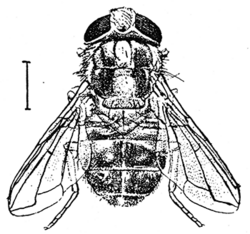| Display title | Biology:Cordylobia |
| Default sort key | Cordylobia |
| Page length (in bytes) | 2,823 |
| Namespace ID | 3026 |
| Namespace | Biology |
| Page ID | 288688 |
| Page content language | en - English |
| Page content model | wikitext |
| Indexing by robots | Allowed |
| Number of redirects to this page | 0 |
| Counted as a content page | Yes |
| Page image |  |
| HandWiki item ID | None |
| Edit | Allow all users (infinite) |
| Move | Allow all users (infinite) |
| Page creator | imported>TextAI |
| Date of page creation | 11:23, 23 April 2022 |
| Latest editor | imported>TextAI |
| Date of latest edit | 11:23, 23 April 2022 |
| Total number of edits | 1 |
| Recent number of edits (within past 90 days) | 0 |
| Recent number of distinct authors | 0 |
Description | Content |
Article description: (description)
This attribute controls the content of the description and og:description elements. | Cordylobia is a genus of flies from the family Calliphoridae. The larvae of Cordylobia are parasitic on mammals, especially rodents. Two species, C. anthropophaga (the tumbu fly) and C. rodhaini (Lund's fly), also are known as parasites of humans. The adult flies feed on rotting fruits, vegetables, and... |
